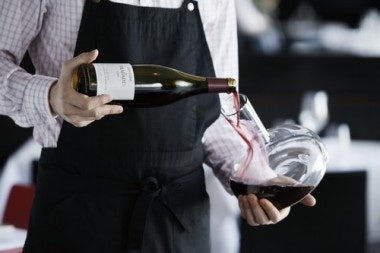French And Spanish Wine Have Leveraged Reputations, Mostly Among Male Drinkers#

Wine imports in China have risen exponentially in recent years, as more middle class Chinese have taken to the drink, high-priced vintages have become more or less de rigueurgifts among businessmen, and bottles of red wine have gradually replaced brandy at official functions. While domestic Chinese wines have grown both in production quantity and (slowly) in quality -- though they still have a long way to go -- the Chinese wine market, at least at the middle- to high-end, is still dominated by French and Spanish reds.
However, new world wineries from the U.S., Chile and Australia are fighting tooth and nail to chip away at their dominant European counterparts in China. But with the wine market in China already crowded, and consumer education still lagging behind interest, what's their best method of attack?
This May, the American Secretary of Commerce, Gary Locke, signed a Memorandum of Understanding (MOU) with Hong Kong Commerce and Economic Development Bureau Secretary Rita Lau on "Cooperation in Wine-Related Businesses." The agreement, also signed by the U.S. Department of Agriculture, outlined a plan to support the marketing and promotion of U.S. wines in Hong Kong and elsewhere in Asia -- particularly mainland China. However, China's wine market is a notoriously difficult nut to crack. Looking beyond the country's stiff import duties -- which Hong Kong eliminated in 2008, leading to a flood of wine imports in the resulting two years -- marketing and consumer education present twin problems in the mainland Chinese market.
From Wines-Info, which looks at the dominance of French and Spanish wine in China:
Everyone looks hungrily at China with its growing economy and expanding consumer base. But it is hard to break in. Bulk wine imports are substantial (imported wines get blended with local products and labeled “Chinese wine”), but at unsustainably low prices. No future there.
France and Spain have had better luck. The French have been able to leverage their reputation and the prestige of their finest producers to carve out an attractive niche markets for Bordeaux and Champagne as luxury products.
The Spanish achieved success through old fashioned hard work. They have partnered with Chinese wine producers in both production and distribution. If Chinese wines are improving in quality then this is at least in part due to technical improvements facilitated by joint ventures.
If the French and Spanish present such a challenge in China, what are the chances for American wineries to get a piece of the action in the Chinese wine market? Despite the fact that most new Chinese wine consumers will simply opt for a French Bordeaux because of its associations with quality, and many gift-givers will simply turn to the most expensive bottle at the store -- which often happens to be French -- the chances for American wineries are pretty good in China as long as they know who they're targeting and make some smart tactical decisions. While exports of and demand for American wine has risen steadily in China, there's no reason it can't grow even faster.
Branding, Geography, Gender, and Age#
Branding#
: Promoting quality is key, and California wineries in particular can leverage their state's sunny, glamorous image in China by promoting the Napa Valley much in the same way they promoted it in Japan. More than anything, California winemakers need to market an image of sophistication and set their wines at a comparatively high price point to capture some of the gift-giving demographic.
Geography#
: There's more potential for white and sparkling wines in China's tropical south, particularly in cities like Guangzhou and Shenzhen, where outlooks tend to be more international and consumers more willing to experiment. Promote lighter wines heavily in southern provinces in the short-term while taking a more long-term view of cracking markets like Beijing, where full-bodied red wine will reign at state functions and in gift boxes for years to come.
Gender#
: Women are projected to become a dominant force in the Chinese wine market, much as they are emerging more strongly within the luxury market. Market sparkling and white wines to women in major cities, offering giveaways or "his and her" wine gift boxes that include American red and white wines together.
Age#
: Younger drinkers in China display significantly different consumption patterns than their parents. Exploit their openness to foreign wine and spirits by holding regular wine tastings, supporting sommelier education programs at universities, and making arrangements for drink specials at popular nightclubs or bars.